Two years ago this month, I set out for Colombia, gripped by an emotion I hadn’t felt in years as a traveller — trepidation.
Having focused my travels on Europe, Asia, and the Pacific up until that point, South America was entirely terra incognita for me — a phrase that means “unknown land” in Latin. For the first time in years, I couldn’t picture what awaited me on the other end of my plane ride to Cartagena, where I would begin my one-month journey through Colombia.
Set along the northern Caribbean coast of the country, Cartagena is one of Colombia’s largest cities, as renowned for its colonial architecture as for its beautiful beaches. But what most impressed me, soon after arriving on a humid August afternoon, was how familiar the city felt — unexpectedly resonant of other places I had loved in the world.
“I haven’t seen so much colour in one place since India,” I wrote that night, with a few first images of Cartagena now in my sketchbook — of the vibrant, ruffled dresses worn by palenquera fruit sellers in the Plaza de San Pedro Claver; the spectrum of tropical fruit piled on each roving vendor’s cart; and the colourfully painted houses in the San Diego neighbourhood, every facade requiring a different shade from my paint kit’s palette.
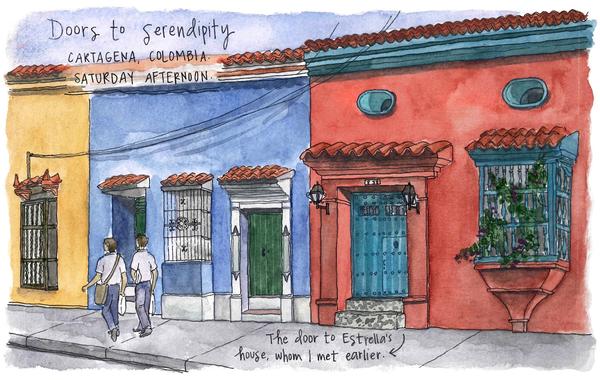
Colourful houses in Cartagena’s San Diego neighbourhood.
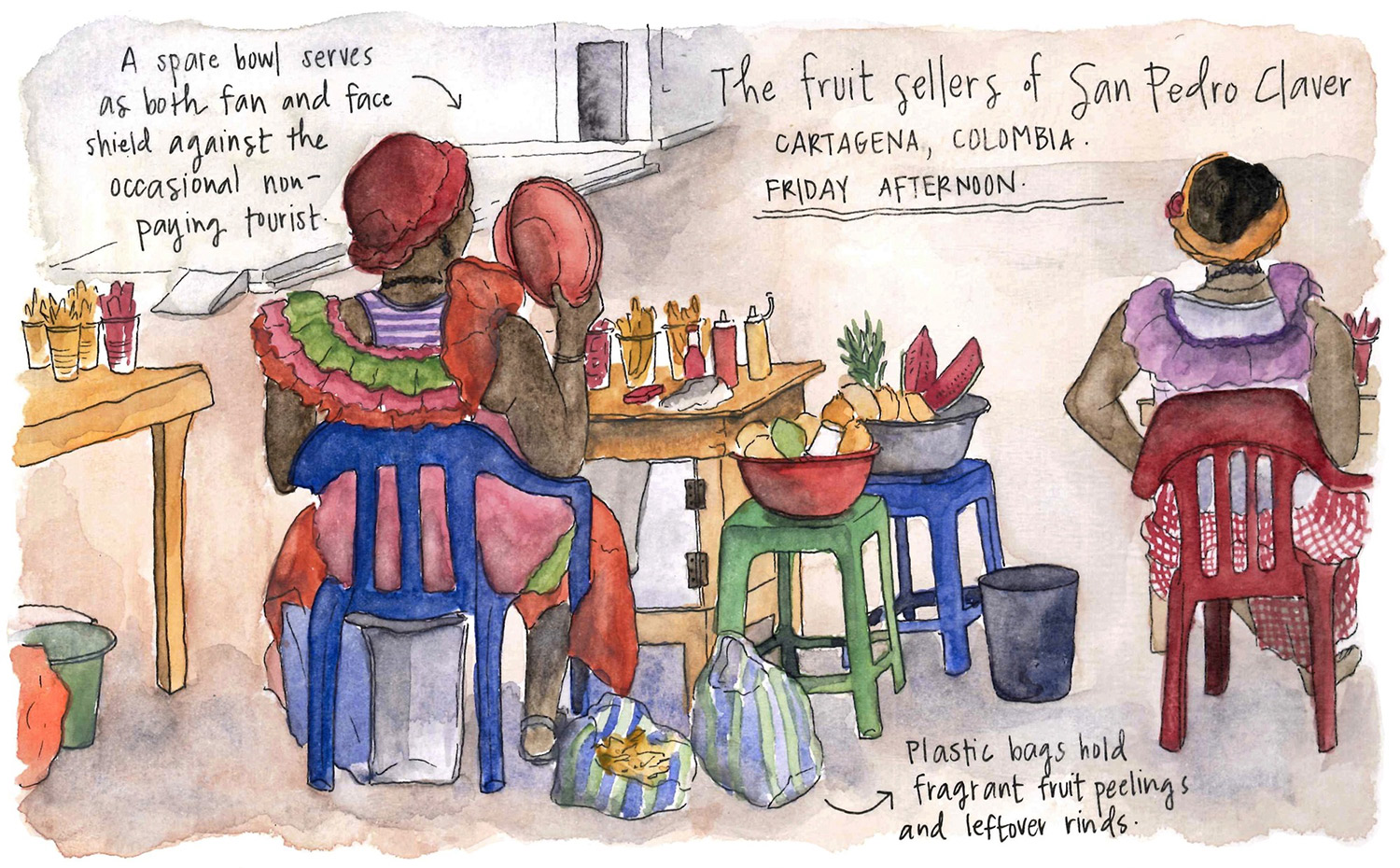
Palenquera fruit sellers in the old town of Cartagena.
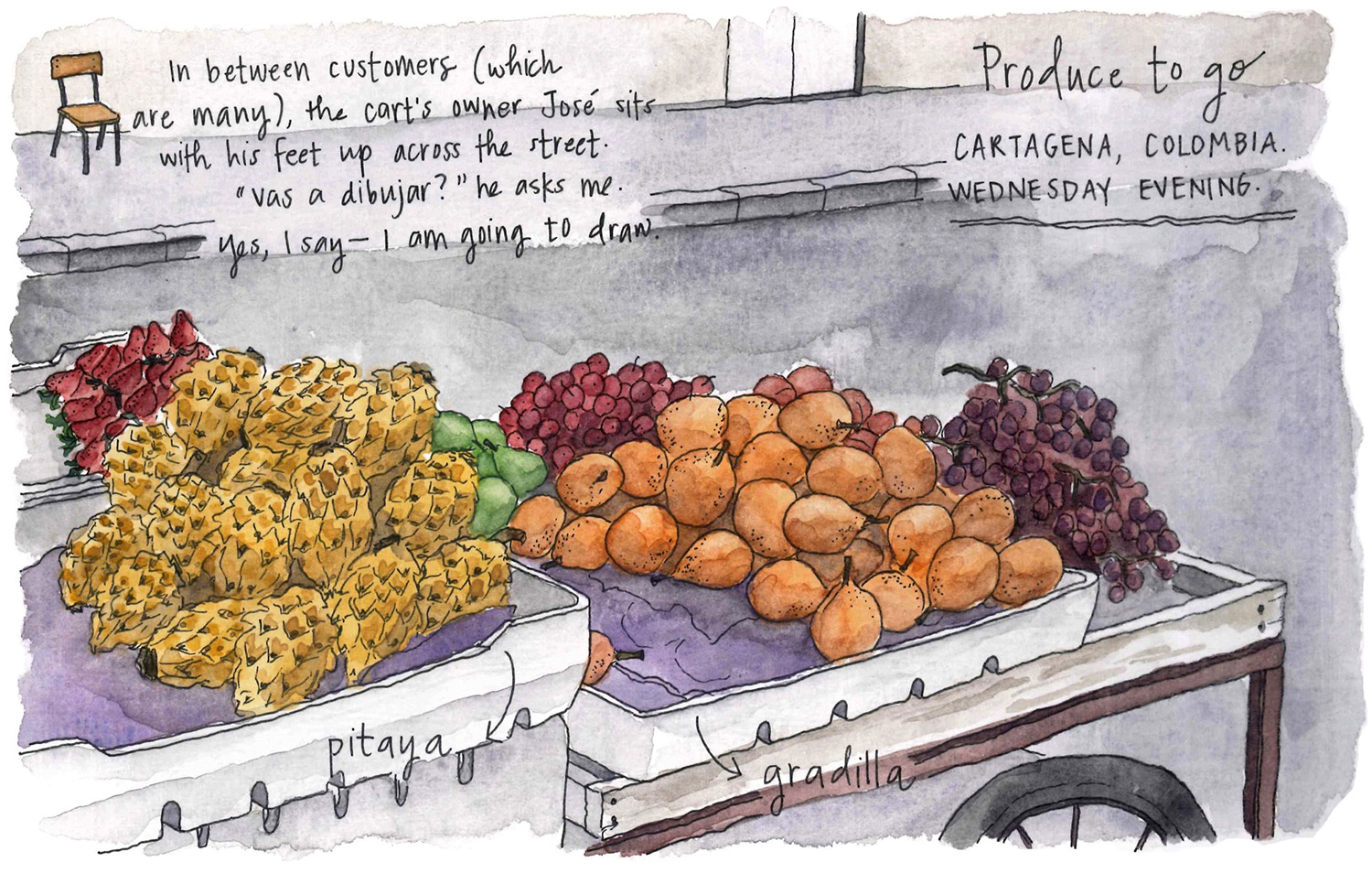
One of Cartagena’s many roving fruit vendors.
But after a week of feeling at home in Cartagena, my journey through Colombia continued — this time, to a less familiar corner of the country.
From Cartagena, I travelled on to the Guajira Peninsula, the northernmost region of Colombia known for its indigenous Wayúu population and expansive deserts — the rugged hills and dunes, a pronounced change in hue from vivid Cartagena. And it was there that my first trip to South America held a fitting number of other first experiences.
It was my first time sleeping in a hammock, beneath the thatched roof of my hospedaje, or guesthouse, in a fishing village called Cabo de la Vela. It was my first time seeing fences constructed from cactus, their spines as intimidating as any string of barbed wire. And on a journey even deeper into La Guajira to the northernmost point of mainland South America called Punta Gallinas, it was my first time witnessing flamingoes in the wild.
Watching the fluorescent pink flock take flight reminded me that as comforting as it can be to feel at home when we travel — especially in places that are far outside our comfort zone — so is there beauty in the strange and unfamiliar.
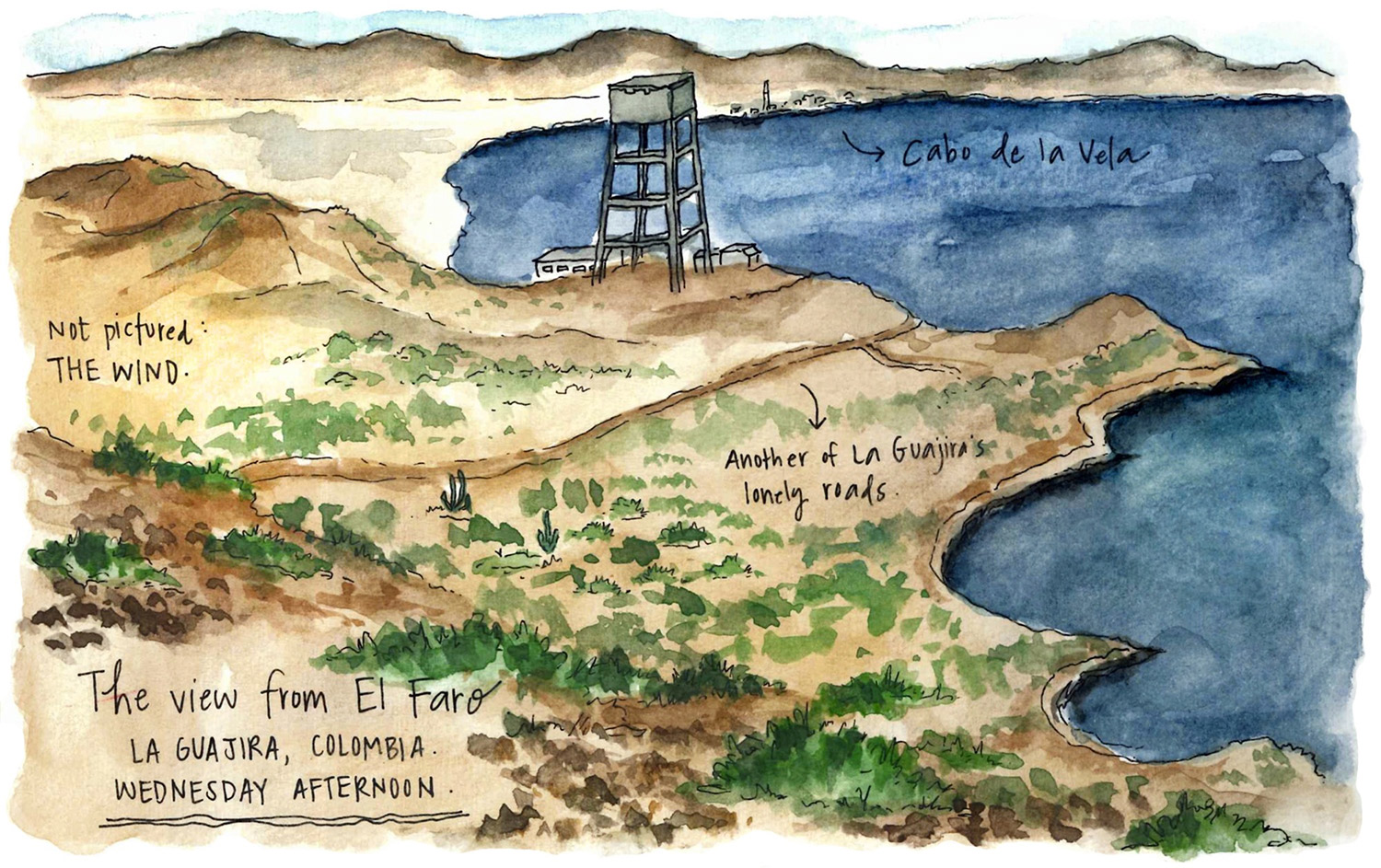
The view from a lighthouse in La Guajira.

A typical “ranchera” scene in La Guajira.
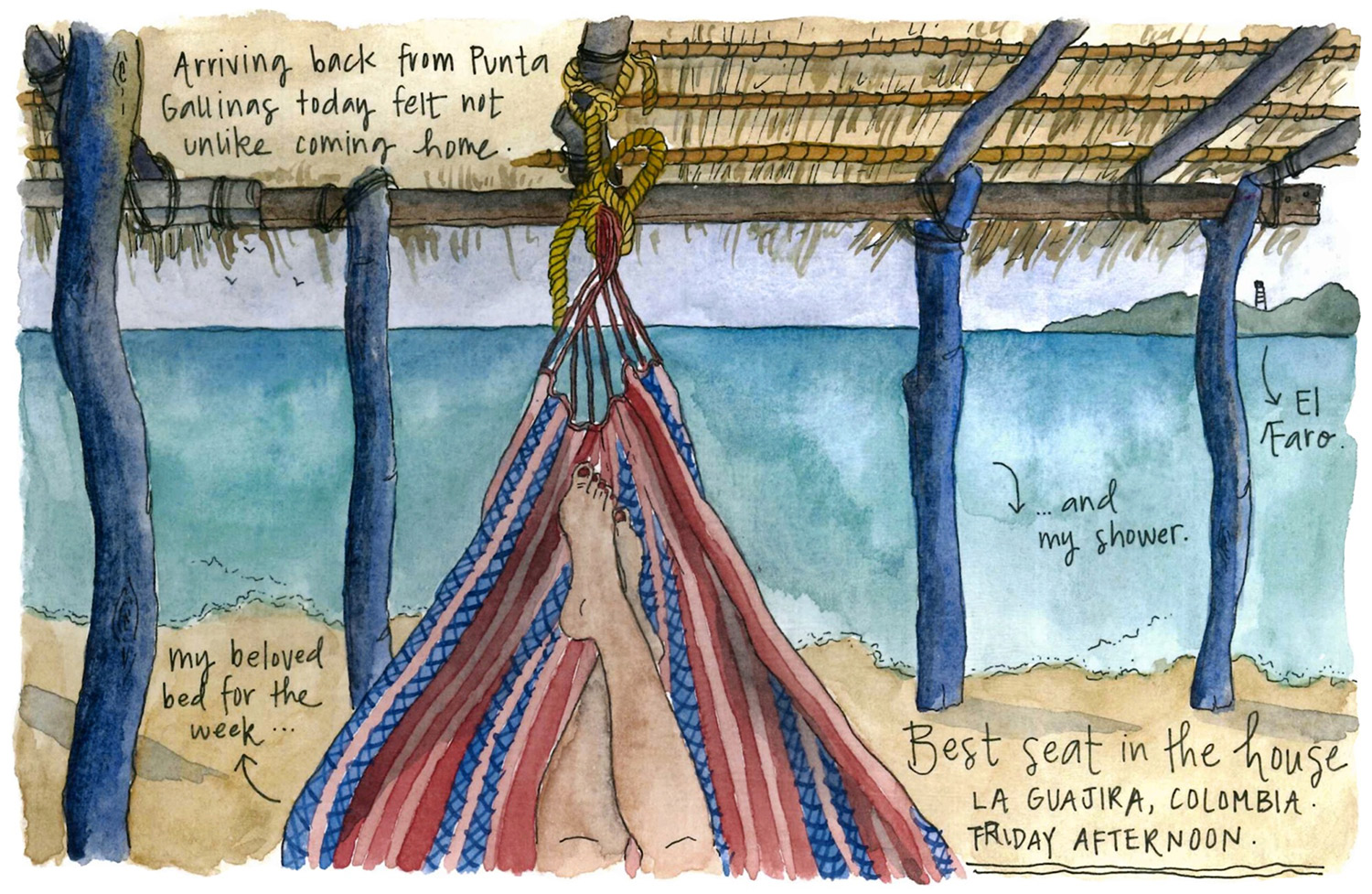
Resting in a “hospedaje” in Cabo de la Vela.
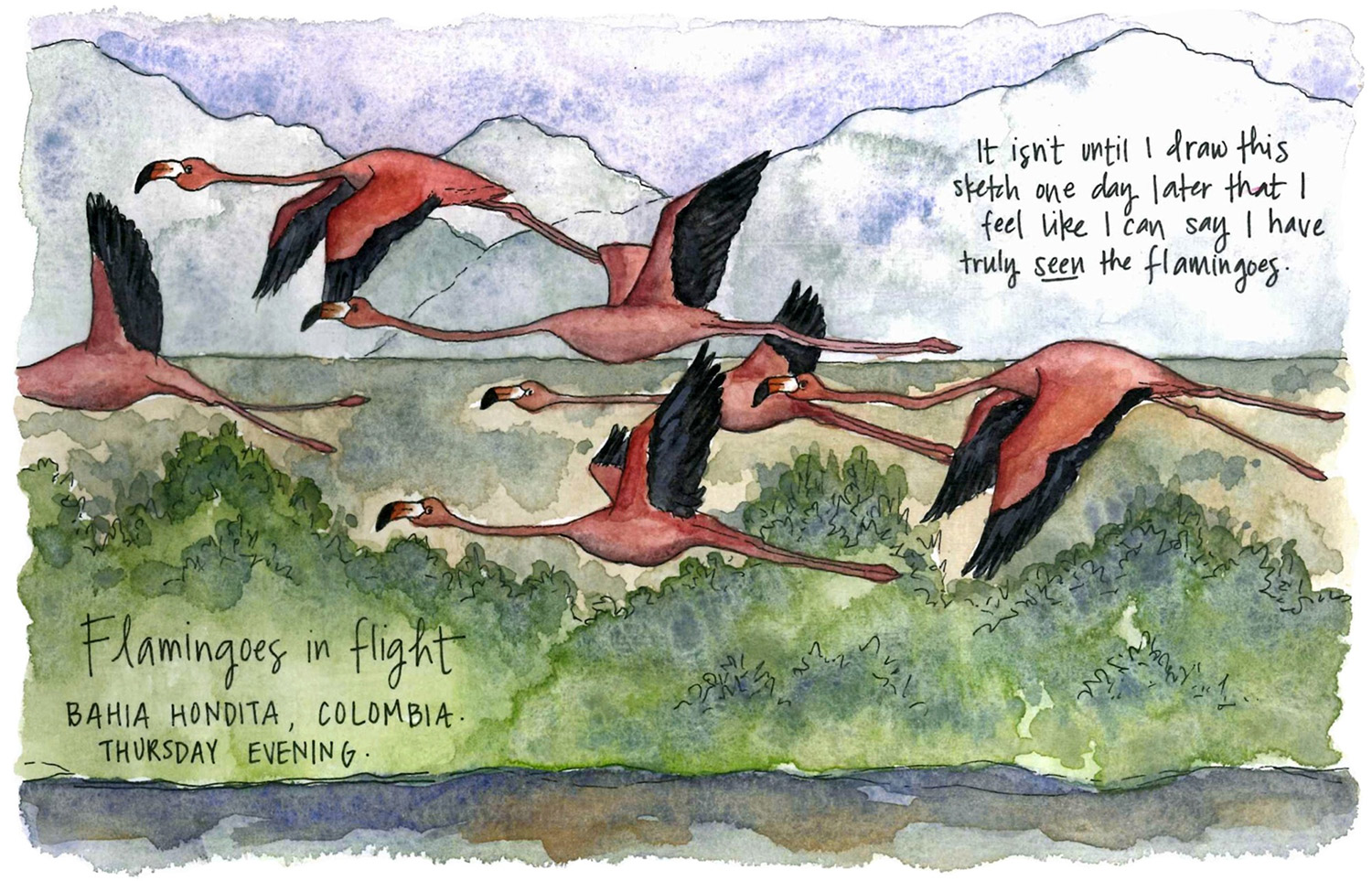
Witnessing a flock of flamingoes at Punta Gallinas.
The final week of my journey brought one last adventure: a five-day trek to a pre-Colombian archaeological site called La Ciudad Perdida, or the Lost City.
Constructed around 800 AD, the site is some 650 years older than Machu Picchu and was discovered by the outside world even later — by looters, in fact, in 1975. But just as Machu Picchu was significant for the Inca people, so has La Ciudad Perdida always been held sacred by four indigenous tribes from northern Colombia, including the Kogi and Wiwa.
After my time in La Guajira’s wide-open deserts, trekking to the Lost City carried me through an entirely different landscape; different not only because of its dense, verdant jungles and lush vegetation, but because of the Kogi and Wiwa villages we passed as we walked. The humid air was often thick with woodsmoke, which drifted out through the bamboo walls and thatched roofs of their homes.
And yet echoes of the desert still followed me there in the jungle — as I once again slept in a hammock each night, and was surprised by the sight of two colourful toucans at breakfast one morning, which I also paused to sketch.
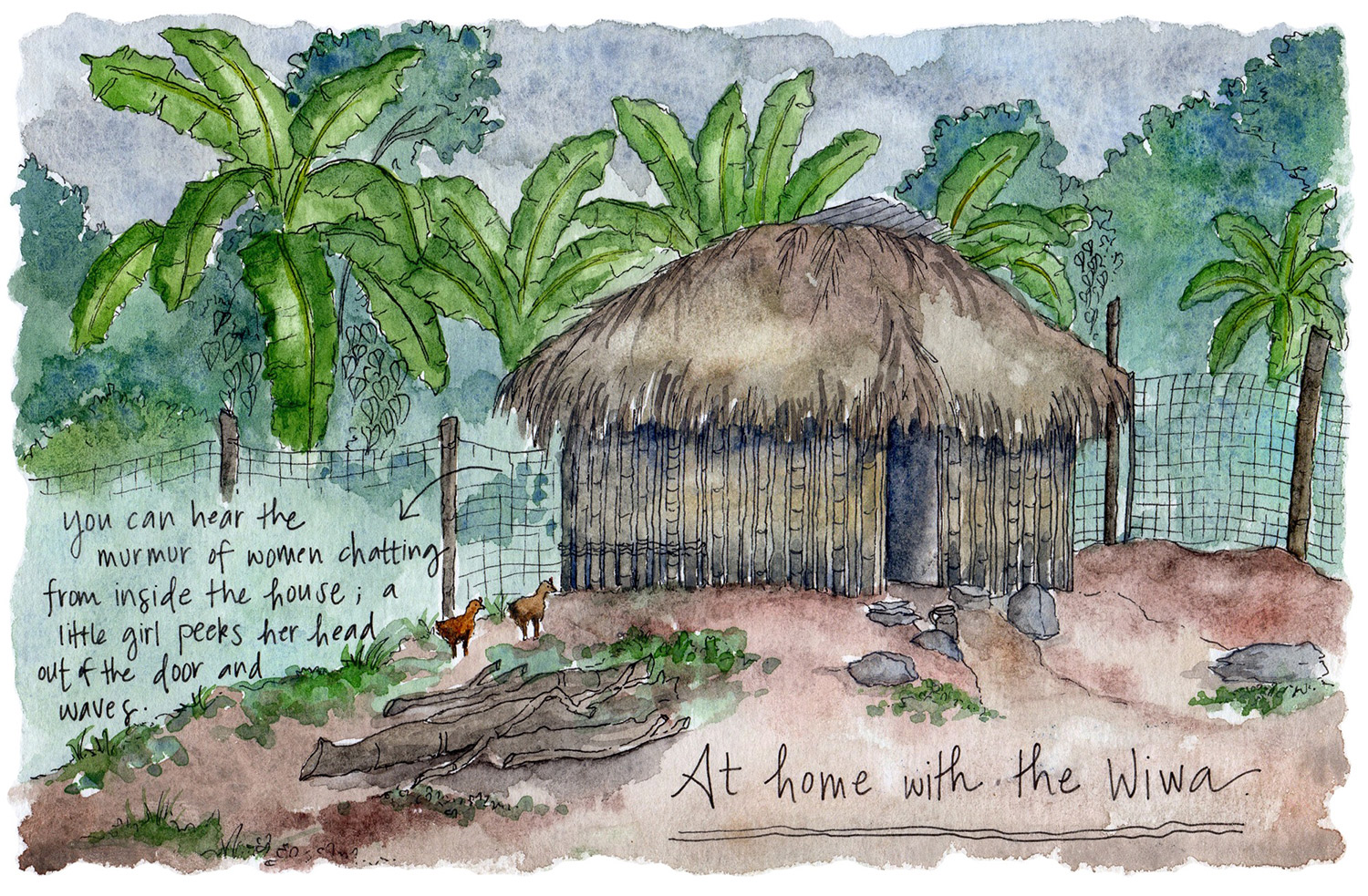
A traditional Wiwa home in northern Colombia.
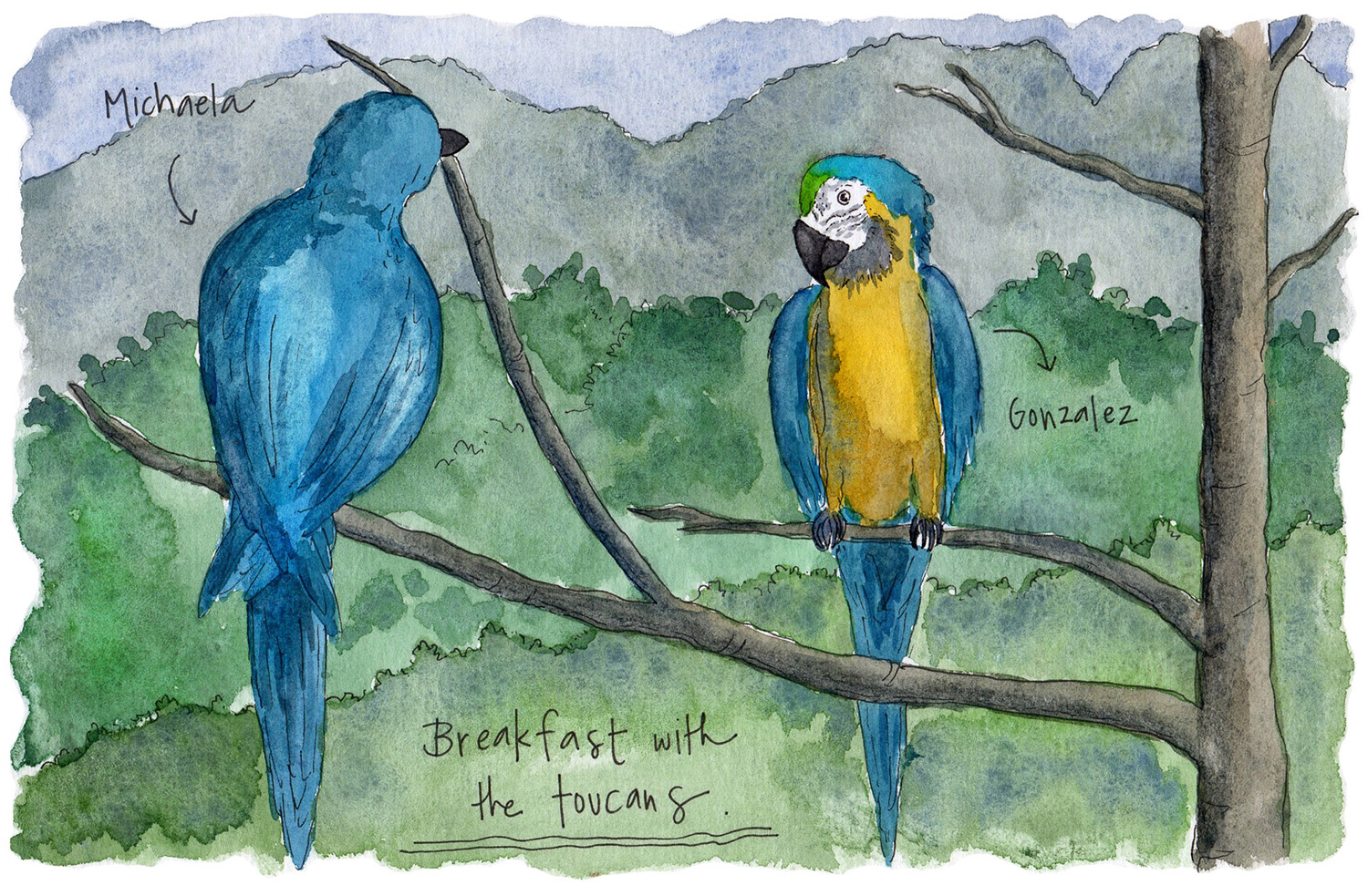
Making friends on the trek to La Ciudad Perdida.
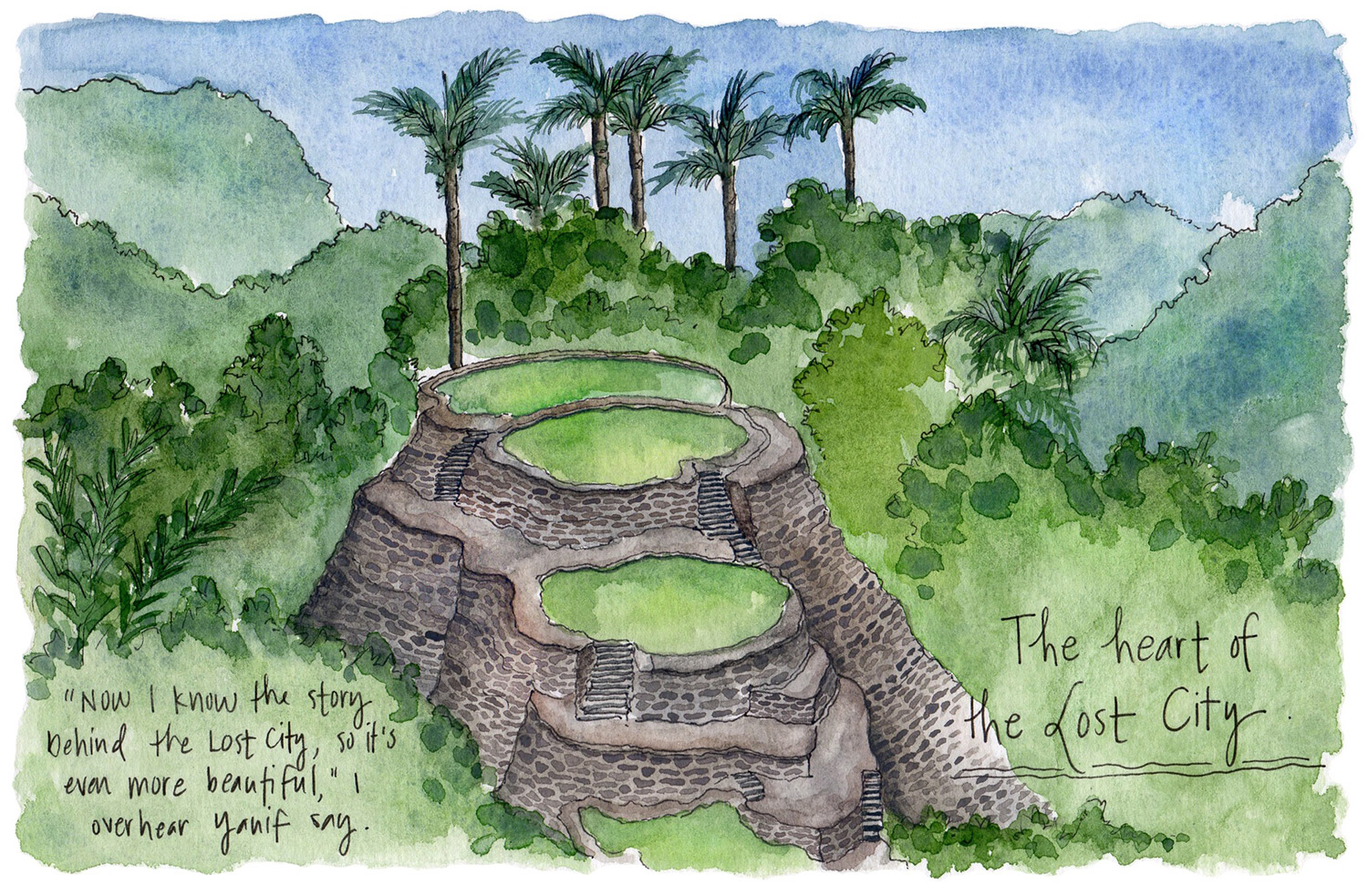
Glimpsing the Lost City at 915m, or 3,000 ft, above sea level.

One last page from my Colombia sketchbook.
On the fourth morning of our trek, we finally reached the summit of La Ciudad Perdida. After scaling 1,200 narrow stone steps that were more than a thousand years old, the rush that coursed through me was visceral — and it wasn’t just because I was desperate to catch my breath. Gazing down at the stone terraces and walls that comprise the ancient site, I felt as though I were looking at a metaphor for all of Colombia itself.
Just as the Lost City had been hidden from the world for centuries, so had Colombia been hidden from me behind jungled layers of the unknown. I had been filled with such unease at the start of my journey, unsure if I would be safe or find my feet in the country.
Now, one month later, I was reminded of what a gift it is to find a place for ourselves; to traverse its cities and landscapes with our own feet and to form a connection with it that is uniquely ours. We travel for many reasons –– to find elements of home in a new culture; to stand in wonder at the unfamiliar; and, perhaps most importantly, to slowly grow more familiar with the unfamiliar, as our comfort zones are stretched and expanded.
Little by little — poco a poco — we face each terra incognita, getting to know our unknown lands in the world.
Getting There
G Adventures runs a number of departures in Colombia encompassing a wide range of departure dates and activities to cater to different tastes. We’re thrilled at the prospect of showing you this big blue planet of ours — check out our small group trips here.























